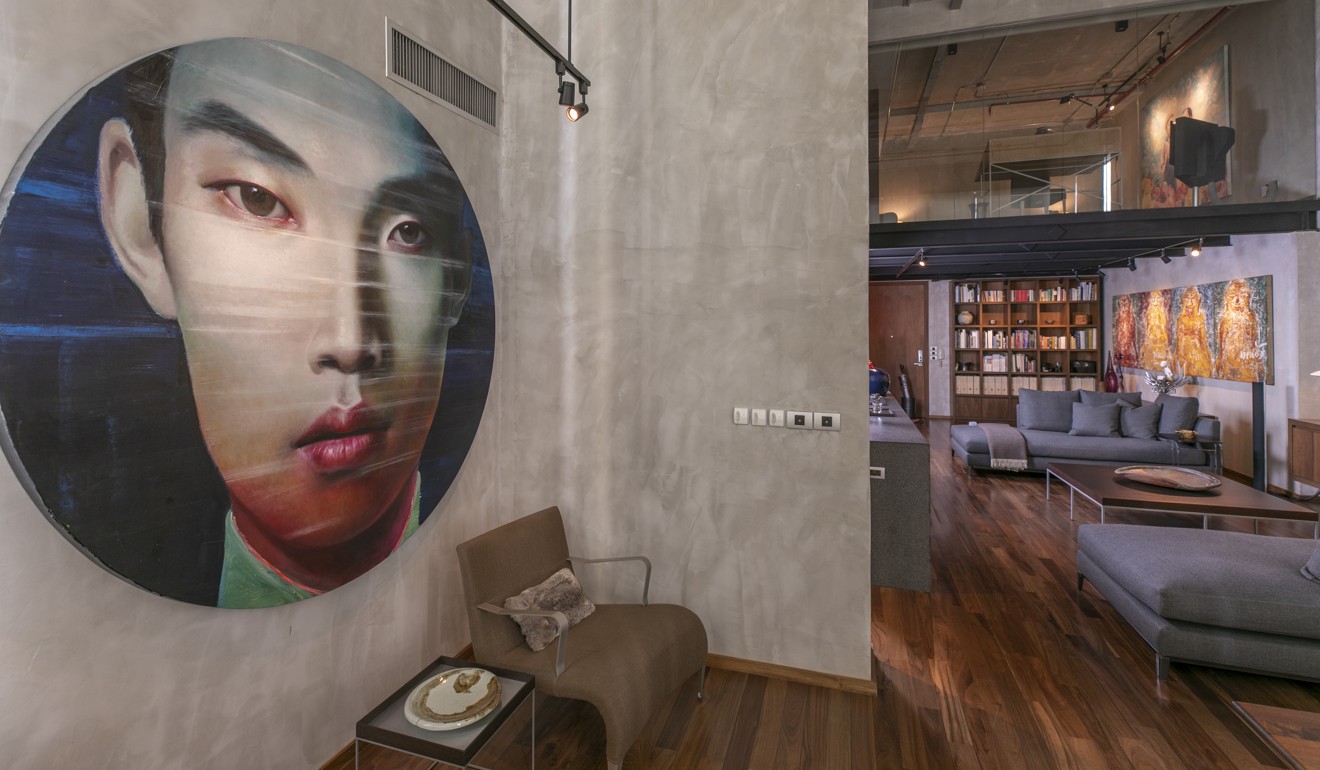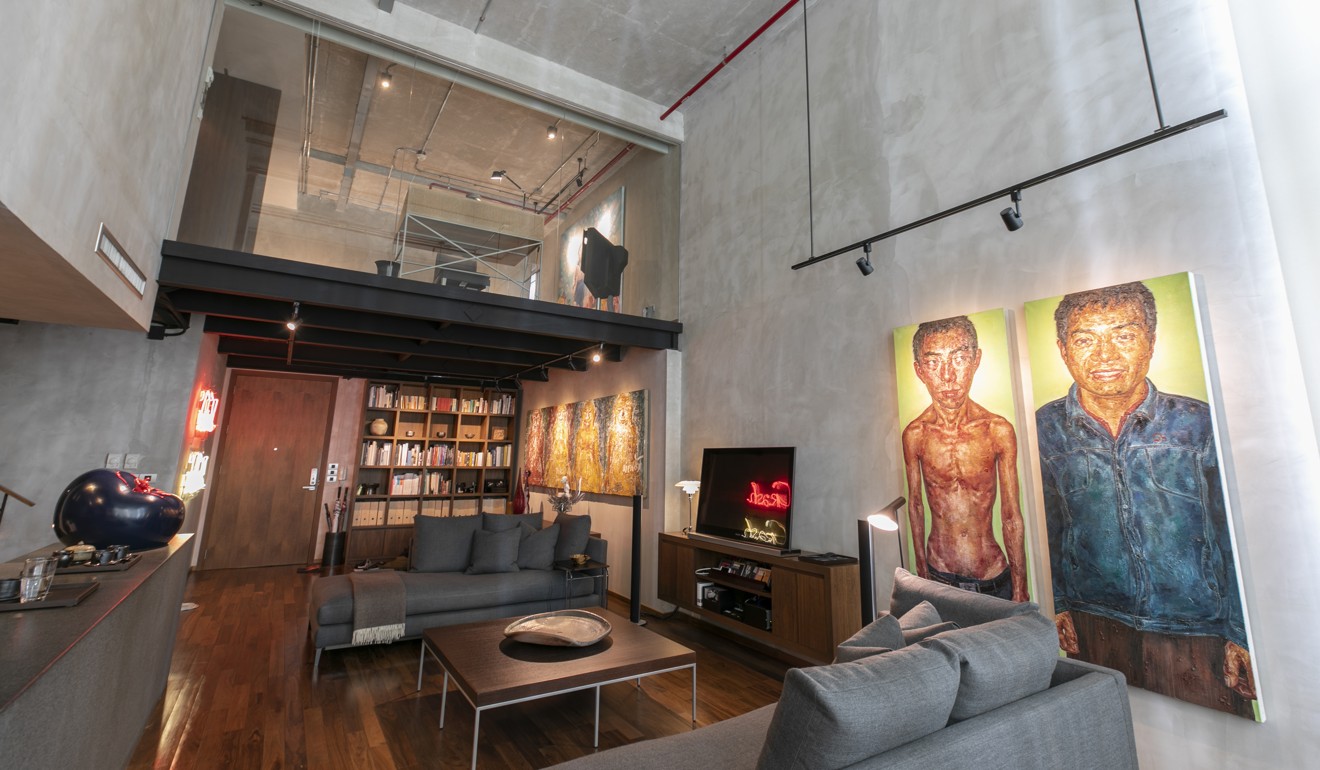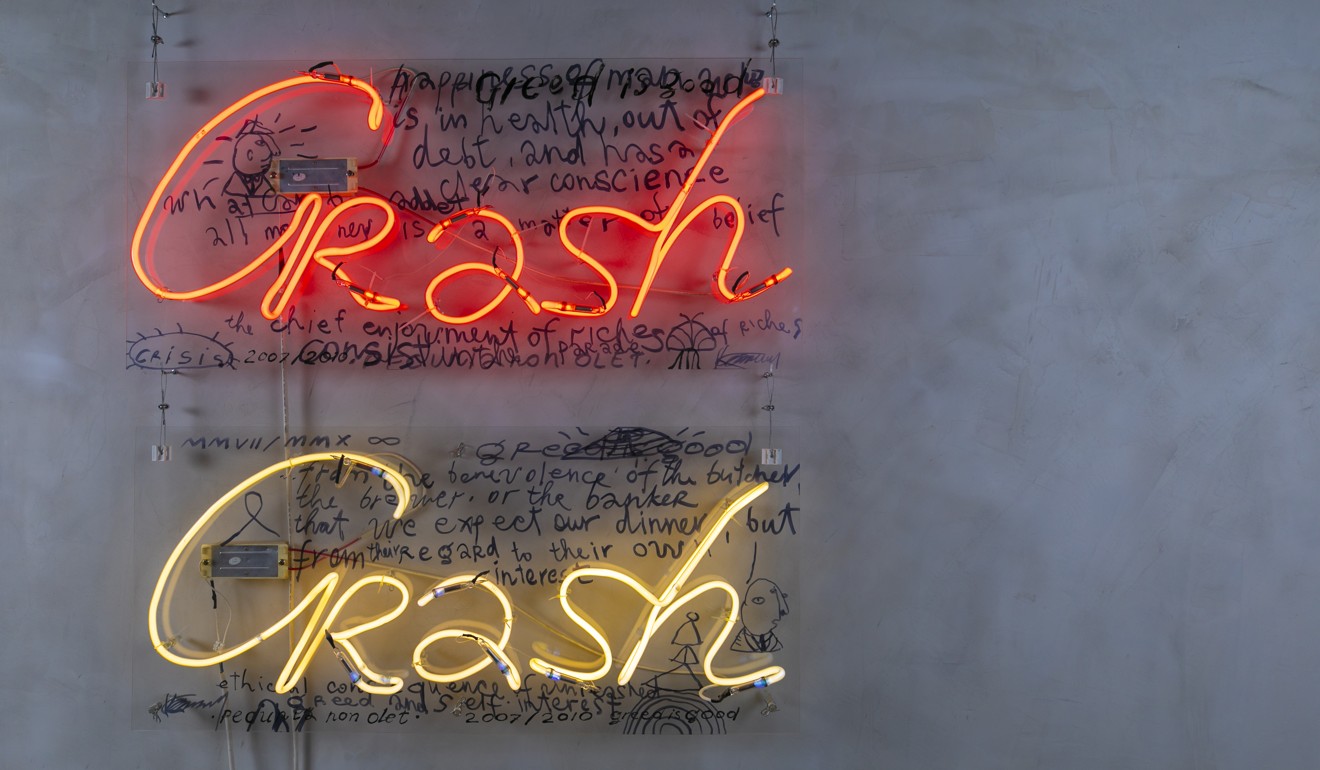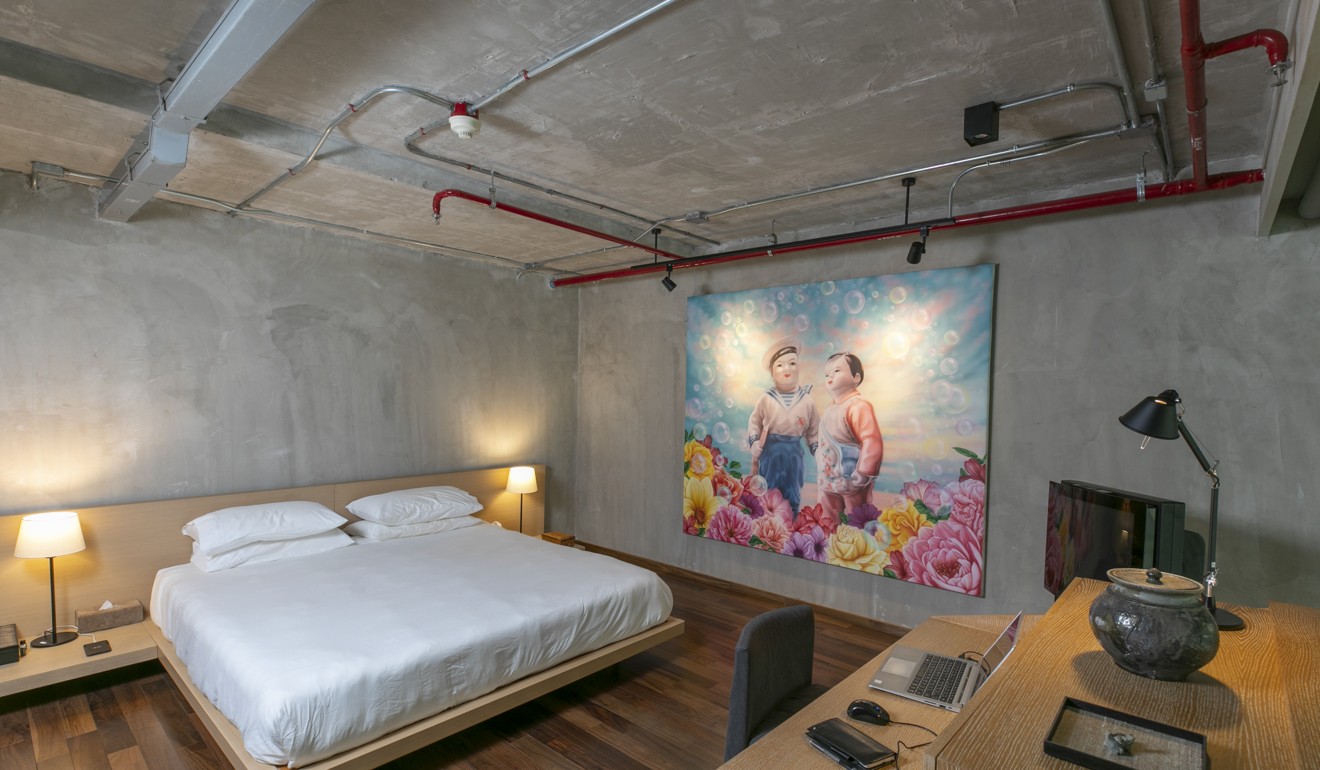
From Hong Kong to Bangkok: interior designer retains edgy, industrial style in Thai home
Known for giving Hong Kong’s traditional Chinese tenements a second life, Andrew Bell works his magic again in his 1,300 sq ft Bangkok duplex, minus his trademark black-framed Central Market windows
Bell’s eye for drama and love of industrial-edge design are evident in his own home. In Bangkok, Thailand, his base since leaving Hong Kong in 2012, he and his partner live in a one-bedroom, 1,300 sq ft flat that is as contemporary as it is chic, and lofty where it has the greatest impact.
How Andrew Bell transformed Happy Valley home back to its 1950s roots
The “home/office”, as it was categorised, had immense appeal as a two-storey unit (“I think nearly everybody wants to live in a duplex at some stage,” says Bell). Other big pluses were the huge windows at one end, and the fact the property would be handed over unfinished.
“It was sold completely empty,” says Bell. “It was unique even in our own condominium block.”
So, unlike homeowners in Hong Kong who find themselves dismantling newly completed housing upon taking possession of their property, Bell was more or less able to dictate what he wanted.
The rawness of cement seems to gel with the natural aspects of stone and timber
Improbably – space-starved Hongkongers might say “crazily” – that saw him halve the mezzanine, which originally extended from above the main entrance to what is now a single black post emerging from the top of the kitchen’s granite island.
“I thought, ‘Why have a two-storey apartment if you can’t see the windows?’” says Bell. “So I tore out quite valuable floor space.”
By giving a better impression of the double-height windows as you enter the flat, however, his thoughtful profligacy augments rather than lessens.
Because the cosseted back of the unit is dim in comparison to the bright front section, you are drawn forward towards a “wall” of light-diffusing long white blinds. The focal point in this grand expanse is a beguiling portrait on a round canvas of a Chinese palace servant, whose seductive gaze catches the eye from the dining area. Beneath globe suspension lamps, a long Carl Hansen & Søn wooden table is the setting for formal dinners à deux, with candles.
The other mostly high-end furniture pieces collected through the years provide the interesting refined-versus-raw juxtaposition that is evident in many of Bell’s interior projects: designs from B&B Italia, Ligne Roset and Minotti are foils for a 5.4-metre-high concrete ceiling criss-crossed with exposed conduits (red for the sprinkler system).
Unlike the Hong Kong flats Bell designed with brutal concrete surfaces and columns, however, in Bangkok he chose a more refined look, with smoothly polished, cement-rendered walls. He teamed these with walnut floors, and dark granite in the kitchen and two bathrooms.
“The rawness of cement seems to gel with the natural aspects of stone and timber,” he says. And although the flat is missing his much-loved “Central Market” windows, here matte-black exposed steel beams hold up the upper floor. The sole bedroom, with en-suite toilet accessed via a walk-in wardrobe, occupies that entire level.
European-style Hong Kong apartment has a view to die for and a local flavour
Furnished sparingly, with two chaises longues occupying the area between the open kitchen and television wall, art abounds in the apartment. In fact, it was partly designed around important pieces, including a neon work, Crash Crash (2010), by Macau-based Russian artist Konstantin Bessmertny, which electrifies the entrance. And hanging in a prime spot beside the staircase landing is the first piece of art Bell bought upon arriving in Asia 30 years ago – I Pray Therefore I Believe (1991), by Singaporean artist Ang Yian San – from Victoria, Australia.
It is there that Bell is now completing another home, this time, he says, “with a fabulously big backyard, so I can eventually have dogs”.
But didn’t he say he’d always wanted to live in a duplex?
“Your home is a stage for a certain period of your life,” he says.
Meaning another great show is in the works.



Living area detail Beneath black steel beams supporting the 350 sq ft mezzanine is a wall of custom-made shelving. The quadriptych, The Fat Man (2007), was acquired directly from artist Prasong Luemuang, at his studio in Chiang Mai, Thailand. Beneath it is a B&B Italia Maxalto Titanes sideboard purchased 20 years ago from Space Furniture. Buddha Z in Steel Lotus (2010), a sculpture by South Korea’s Wang Zi-won, was bought at the Asia Hotel Art Fair in 2011, at the Mandarin Oriental, in Central. The red, orange and blue glassware, Light Marks (1997), by Ben Edols and Kathy Elliott, came from Distelfink Gallery (1005 High Street, Armadale, Victoria, tel: 61 03 9822 8733).

Entrance Crash Crash (2010), by Konstantin Bessmertny, came from the now-closed Amelia Johnson Contemporary gallery in Central.



Stairwell Walnut, which features on the floor, was also used for the stairs. The artwork, I Pray Therefore I Believe (1991) by Ang Yian San , was Andrew Bell’s first art purchase on moving to Asia 30 years ago.


Bathroom Granite and walnut feature in the lower-level bathroom, where the wet area opens onto a small laundry balcony.
Visit andrewbellinteriors.com for more details. (Hong Kong contact: Andy Chiu, tel: 6302 8697)

